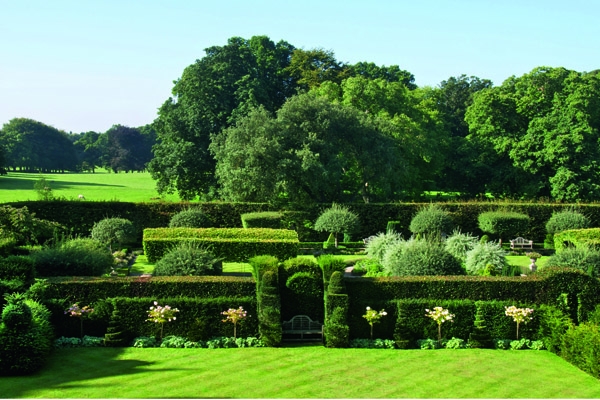Holker Hall is situated in a beautiful Cumbrian landscape within sight of Morecambe Bay, and in 1950 it became the second stately home, after Longleat, to be opened to the public. The house itself dates back to the 16th century, with a Victorian west wing replacing one that burned down in 1871. It is, however, the extensive park and gardens surrounding the house that have made it famous. Several generations of the Cavendish family have left their mark on this land, but the present garden is largely the creation of Hugh Cavendish — who was brought up at Holker and inherited it on his father’s death in 1972 — and his wife Grania.
Taking on an historic garden involves one fundamental decision: whether to preserve or to evolve. ‘Trying to preserve garden design is both futile and unexciting,’ Cavendish argues. ‘What is interesting is incorporating the noble relics of the past into the new.’
This view has clearly coloured his stint in charge of historic gardens and landscapes at English Heritage, an organisation with a distinctly patchy reputation as a custodian of the past. There is an underlying suggestion in A Time to Plant that gardens overseen and developed by their owners have an advantage over those that become part of the official heritage industry because they are not hampered by dogged, and sometimes deadly, historicism.
Like Christopher Lloyd at Great Dixter, Cavendish had no qualms about ripping out a rose garden which may originally have been the work of the well-known local designer Thomas Mawson (1861-1933). ‘South-west Cumbria can have 70 inches of rain in a wet year, and has hours of sunlight that are rather fewer than the national average,’ Cavendish writes firmly: ‘It is not rose country.’








Comments
Join the debate for just £1 a month
Be part of the conversation with other Spectator readers by getting your first three months for £3.
UNLOCK ACCESS Just £1 a monthAlready a subscriber? Log in